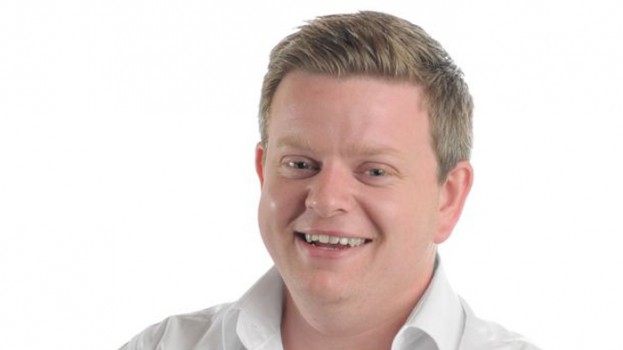It has only just begun, but there’s no doubt that 2022 is shaping up to be another year filled with uncertainty. To help get some clarity on what’s to come in the year ahead, MiC caught up with Alastair Taylor, CEO of Publicis Media in Canada, to talk about what is on top of his mind as the year begins, the opportunities planners should prioritize and the changes that need to happen to utilize media in the most creative and effective way possible.
What are the first things that you’re planning to get started on for the new year?
I really think so much of what we’re going to do is going to be about retaining talent. Everyone is growing, everyone is facing the same challenges with certain skill sets. We’re trying to make these media agencies the best place possible work. A little cliche, but you can’t understate that at least 25% of my job now is focused on HR and people and training and talent.
Is there anything in particular you are doing to keep up morale?
Stating that work from home would be a permanent option for us gave people one less thing to worry about. If you want to move to Hamilton or Vancouver, you go for it, and when the time comes for a client meeting, you’ll be able to find your way there. And we’re going to communicate this quickly and also reserve the right pivots, as necessary.
It’s also been setting expectations. I’ve communicated to people that I think January is going to be really difficult. Last year, we sprinted to the finish line for Christmas, but then it passed and it was January 4 and we were like, “Oh, my God, I’m still staring at the same four walls, nothing’s different.” We didn’t get that sense of relief that we’ve previously had from being able to physically be away from the office.
So we’ve increased our mental health benefits dramatically. For some people, work is a good distraction, but for others, it’s a heavy weight, and we’ve just got to be able to support people in different stages of that process. If you’re struggling with your work, the first question we’re going to ask is are you okay, then the second question we’re gonna ask is if you have too much workload, so it doesn’t become a performance conversation. Providing as much certainty as possible as we can around the work environment is important. We’re in a position where we continue to grow and win business, so we’re able to sort of reiterate that every one of our employees has a safe and stable job long as they want it, which I think, given the economic uncertainty, provides some comfort. People have appreciated the transparency. It certainly has definitely given us a more sticky workforce than perhaps some of our competitors have seen.
How have your conversations with clients have changed over the past year?
At first, there was a lot of attention put on the relationships with our clients, because there were so many moving, shifting, changing constantly. For us, it elevated media significantly in the conversations – we had CEOs asking questions about how we can help them, because media is the second or third biggest line item on any P&L.
But we’ve gotten through that period where people didn’t really know what the next day would involve. Now there’s a pattern of behavior established. For me specifically, the sort of conversations have evolved from short term gains and how to hold on to them to more long term. And one of the challenges on their side as well is talent. It’s been quite interesting, as we ran into the end of the financial year, more clients have asked us to hire people for them, because they’re no longer able to hire on their side because of budget issues and because they can’t find people on their side.
Is that related to the trends we’re seeing around in-housing?
I find it quite interesting, actually. The stats that are out there around how supposedly more clients are going to be in housing. I can’t answer with absolute clarity, because I wasn’t the person who runs that research. But my feeling is that perhaps clients are looking for help in-housing more because attracting talent to a place where you could work on three different verticals in the space of six months at an agency is a different proposition than going to work at a one place working on one thing. Now, flexibility is more attractive. So my feeling is that whilst a lot of clients have got in-house performance and we’re more than happy to work with them that way, you also see more and more of them starting to dial it back the other way to go back to the agencies in other areas.
The landscape of what data is available and how it can be used is likely going to change even more. How are advertisers going to respond to that?
Every client has to improve their pool of first party data, which they should have been doing for years, and there are really creative ways to do that. Last year around this time, Starcom did a campaign with Kellogg’s and the guys at Leo Burnett, which was all around “quit day.” The second Friday of January is the day when 80% of people abandon their New Year’s resolutions. The creative response was, on that day, if you scanned a Special K package, you would be sent to a microsite where you could get prizes that would support your New Year’s resolution, like a yoga mat or exercise bike.
There was a super creative use of an insight and a super smart way of utilizing owned data in terms of your packaging. But ultimately, what it was doing was driving first party data. If I’m redeeming that yoga mat, I need to give you an address to send it, I need an email address to receive that communication. That is a great example of letting creativity really fuel that drive for first party data. There have been countless campaigns for decades where it’s asking people to stick your email address here and no one’s really maximizing our opportunity, especially if they weren’t invested in performance marketing. If you’re in the tourism category, you’re probably over indexed, but packaged goods for sure is lagging behind. And it’s fun to help our creative partners see a way of utilizing data to support their creativity.
When talking about first party data and media, retailers definitely have to be part of that conversation. How will their offerings evolve to support client demand for first-party data?
We’ve seen a proliferation of retailers utilize their own first party data to effectively become media companies. Amazon has been doing this for quite a while now, and we’ve had Walmart Connect and Loblaw Media Group expand their footprint and they’re offering. What’s compelling to me, though, is that we see the ecomm business growth slowing. It’s still growing year-over-year, but ultimately, the rate of growth is not keeping up with the proliferation of new media companies being offered through retailers. So that’s putting pressure on their business. The solution can’t always be “we’ll run this campaign with our data, and it’s going to be more efficient and more effective,” because frankly, it isn’t.
If they are going to continue to win media dollars, they’re going to have to be more innovative. So if we look at one of our clients, like Smuckers, Walmart and Loblaws can’t just promise a quicker or bigger sales lift. There needs to be something more, because there’s a finite amount of dollars entering. They can evolve to offer more creativity to their clients to CPG companies. Maybe their assets can become a source of entertainment even.
You’ve mentioned that out-of-home may be the last bastion for high net worth individuals, since they can afford to pay for all these ad-free subscription services.
That’s something that’s been on the radar for four or five years now. Plus, paywalls are going to potentially do that for news content.
I think it’s an interesting opportunity, and the out-of-home companies have done a good job of digitizing their existing inventory, ensuring that places of high value are as good a quality environment as you could hope for. My hope is that the industry continues to invest the way that they have in premiumizing the look and feel of their inventory, even in places that aren’t what you would consider necessarily “high net worth.”
Is that something that is still true, given the potential we’ve seen for pandemic-related disruptions?
One of my frustrations with our industry is that we just don’t follow the data enough. If you look at out-of-home traffic patterns, we hit 85% of the same traffic as we were pre-pandemic a while ago. But demand was still soft. To me, that represents an opportunity for an advertiser. And I think that there’s not enough clients or planners raising those questions of, “why don’t we go back to the old school and do a double-check on their voice and share of market?” I think OOH right now is probably a little bit undervalued relative to the audience that they have and the quality of the environment they offer.
I cannot see traffic patterns drop to the level that they were in mid-2020. And it will be those advertisers that are brave, that, you know, make those calls and stick with those channels, and I think will succeed.
Other than predictions, do you have any hopes for the year ahead?
What I would love to do is try and create a bit of a rallying cry around diversity and media planning. There’s biases that exist in media planning that, frankly, I’ve employed throughout my entire career. Like, when we buy our out-of-home campaigns, we might buy them on the main roads in and out of all the major cities to get the most traffic, but that skews heavily towards car ownership, and therefore, a less diverse audience. And actually, if we took two of those billboards away, we could probably buy a dozen in some different neighborhoods that perhaps are more representative of the total population.
Focusing on our own talent, of course, is a great place to start, but since media is such a big line item for clients, they can look at that and go, what can my media agency do to help tackle some of these issues? How could we make my investments go harder and go further. That’s why we created the inclusive planning playbook and made it available to competitors and clients. We’ve seen good adoption from our clients, but we’re not the whole marketplace. We need everyone else to get involved. So I guess my answer to your question is my hope is that more people to begin a diverse approach in their planning, rather than relying on what has always been done.
And you don’t need to make massive sweeping changes. We don’t need to, you know, cataclysmically damage one media company or another. But if we all can honestly make a few tweaks, we can actually make a significant difference.
This interview has been edited for length and clarity.
























